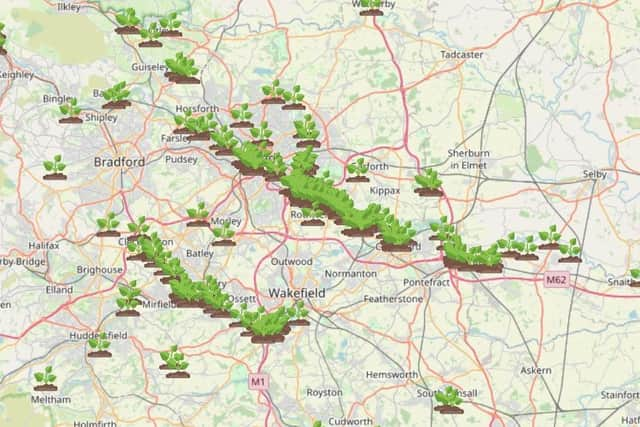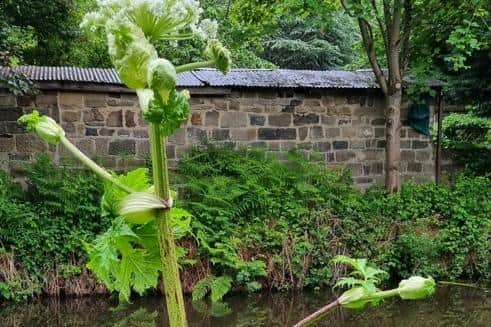Giant hogweed Leeds: Warning over UK's 'most dangerous plant' as interactive map shows where it grows in city
and live on Freeview channel 276
According to Leeds Parks and Countryside Service, Giant Hogweed was introduced into the UK in the 19th century from the Caucasus Mountains and Central Asia as an ornamental plant.
Highly-invasive, it spreads by distributing seeds.


Contact with giant hogweed must be avoided as the sap is phototoxic, causing serious skin burns under sunlight that can reoccur for many years.
Advertisement
Hide AdAdvertisement
Hide AdNow, WhatShed has produced a live interactive map to track the spread of the plant.It shows Leeds Liverpool Canal and the River Aire as particular problem areas - specifically around Whitehall Road.
Leeds resident Steph recently spotted the plant in the city.
Sharing the photo with the YEP, she said: "It's between Rodley and Kirkstall.


"Close by to the Fallwood Marina!"
Hyde Park Source also recently shared photographs of their efforts to contain the plant in the area.
________
Giant Hogweed facts
It is a close relative to cow parsley.
Advertisement
Hide AdAdvertisement
Hide AdIt has thick, bristly, reddish-purple stems and can reach over 3m (10ft) in height.
The flowers are white in a flat-topped clusters that can be as large as 60cm (2ft) across.
Giant Hogweed was originally brought to Britain from Central Asia in 1893.
It commonly grows on riverbanks and wasteland.
Its leaves, stems, roots, flowers and seeds contain toxic components which can be transferred by contact and make exposed skin extremely sensitive to sunlight.
What should I do if I touch it?
Advertisement
Hide AdAdvertisement
Hide AdAfter coming into contact with the plant, the burns can last for several months and the skin can remain sensitive to light for many years.
The NHS advises: “If the sap of the Giant Hogweed comes into contact with your skin, it can cause severe, painful burns and make your skin sensitive to strong sunlight.
“If you touch a Giant Hogweed, cover the affected area, and wash it with soap and water.
“The blisters heal very slowly and can develop into phytophotodermatitis, a type of skin rash which flares up in sunlight. If you feel unwell after contact with Giant Hogweed, speak to your doctor.”
Comment Guidelines
National World encourages reader discussion on our stories. User feedback, insights and back-and-forth exchanges add a rich layer of context to reporting. Please review our Community Guidelines before commenting.
